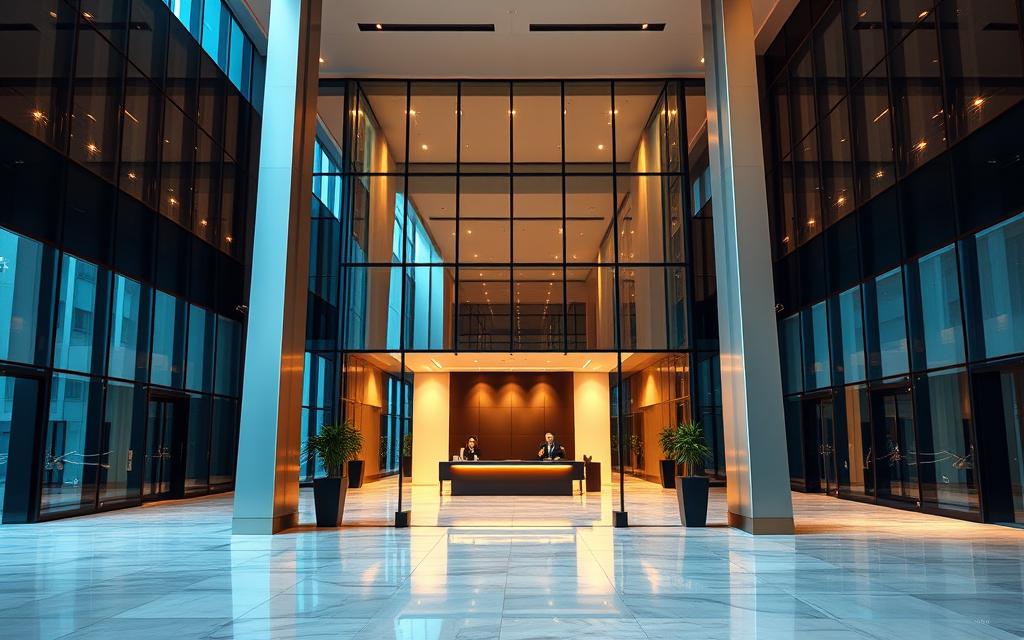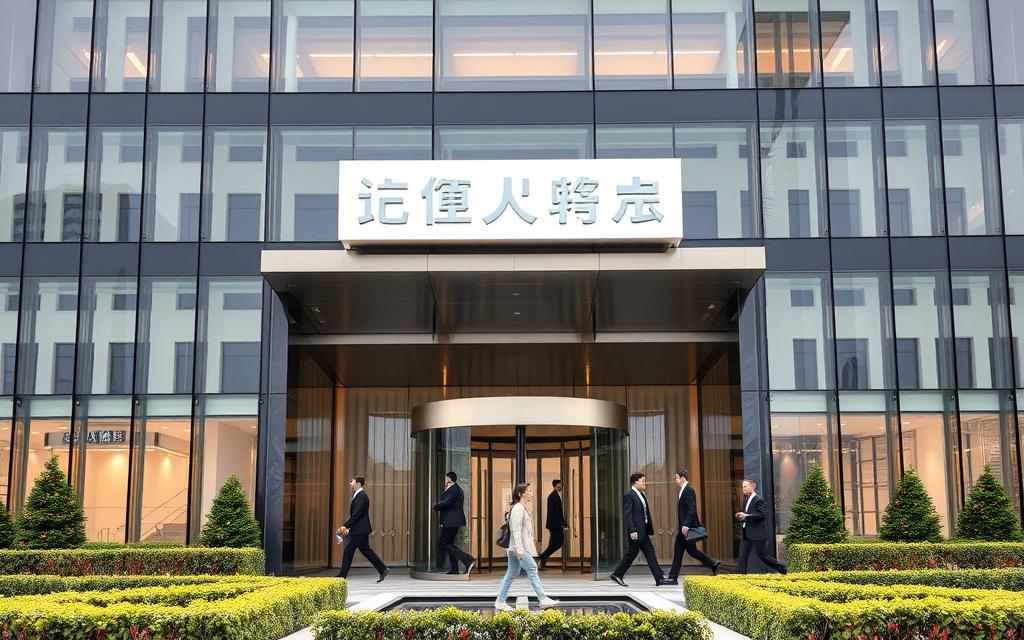Table of Contents
Many people notice the letters “PC” following certain business names and wonder about their significance. This suffix stands for Professional Corporation, a specific type of entity designed for licensed professionals like attorneys, doctors, and architects. Unlike standard corporations, these structures cater to industries with strict regulations, such as law and medicine.
Choosing the right business structure is crucial for legal and financial outcomes. A Professional Corporation offers unique benefits, including liability protections tailored to professionals. However, these entities must comply with state-specific regulations, which vary across the United States.
This article will explore how Professional Corporations differ from other structures like LLCs and LLPs. Understanding these distinctions helps professionals make informed decisions about their business entities. For more insights on starting a business, check out this guide.
Introduction to Professional Corporations (PCs)
Professional Corporations (PCs) are a unique business structure tailored for licensed professionals. These entities are recognized by the state and designed to provide services in regulated industries like law, medicine, and engineering. Unlike standard corporations, PCs cater specifically to professions with strict licensing requirements.
The concept of Professional Corporations gained prominence in the 1980s due to changes in tax laws. These changes allowed licensed professionals to form entities that offered both limited liability protection and favorable tax treatment. Today, PCs are a popular choice for attorneys, physicians, and engineers, among others.
One key requirement for PCs is that all shareholders must be licensed in the same profession. This ensures that the entity remains compliant with state regulations. Additionally, PCs are recognized by the IRS as separate tax entities, which can provide financial benefits.
Annual compliance is another critical aspect of maintaining a PC. Professionals must keep detailed records, such as stock ledgers, to meet regulatory standards. This contrasts with general partnerships, where individual members may face personal liability for malpractice claims.
For a deeper dive into the specifics of Professional Corporations, check out this detailed overview. Understanding these structures can help licensed professionals make informed decisions about their business entities.
What Does PC Mean After a Business Name?
The term ‘PC’ attached to a business name signifies a specialized legal entity for professionals. This structure is designed for licensed practitioners in fields like law, medicine, and engineering. It provides a framework to separate business assets from professional risks.

Definition of a Professional Corporation
A professional corporation is a state-chartered entity that restricts ownership to licensed practitioners. This ensures compliance with industry regulations. Unlike a limited liability company, PCs are tailored for professionals who require specific protections.
Purpose and Benefits of Forming a PC
The core purpose of a PC is to safeguard personal assets from risks associated with professional practice. One key benefit is liability protection, which shields individuals from colleagues’ malpractice claims. However, it does not protect against personal liability for one’s own malpractice.
PCs also offer significant taxation advantages. For example, they allow 401(k) contributions up to three times higher than sole proprietorships. This makes them an attractive option for retirement planning. Additionally, continuity is ensured through share transfers, providing long-term stability.
To maintain compliance, PCs require bylaws and oversight by a board of directors. These components ensure adherence to state regulations and IRS standards. For instance, a medical practice with multiple specialists often uses the PC structure to streamline operations and protect assets.
Legal Implications of a Professional Corporation
State laws play a significant role in shaping the operations of Professional Corporations. These entities must adhere to specific regulations that vary across jurisdictions. For instance, California restricts PCs to certain professions, while Massachusetts prohibits single-owner structures.
State-Specific Requirements for PCs
Incorporation rules differ widely by state. Some states mandate a minimum of two directors, while others require detailed license verification for shareholders. For example, Texas has distinct rules for PCs compared to New York’s PLLC structures.
Annual reporting is another critical requirement. Florida, for instance, enforces strict annual filings to maintain compliance. Failure to meet these standards can result in penalties or even the dissolution of the entity.
Liability Protection in Professional Corporations
One of the primary benefits of a PC is liability protection. This structure shields personal assets from malpractice claims filed against colleagues. However, it does not protect against personal negligence or errors.
Many states also require malpractice insurance as an additional layer of protection. This ensures that professionals can handle claims without jeopardizing their financial stability. Understanding these nuances is crucial for maintaining compliance and safeguarding assets.
Comparing PCs with Other Business Structures
Understanding the distinctions between Professional Corporations and other business structures is essential for professionals. Each entity type offers unique benefits and limitations, making it crucial to choose the right one for your practice.

PC vs. LLC: Key Differences
Professional Corporations and LLCs differ significantly in ownership and tax treatment. While LLCs allow non-professional investors, PCs restrict ownership to licensed practitioners. This ensures compliance with industry regulations.
Another major difference lies in liability protection. LLC members are shielded from business debts, but PCs offer tailored protections for malpractice claims. However, PCs default to double taxation, whereas LLCs can choose pass-through taxation.
PC vs. LLP: What Sets Them Apart?
Professional Corporations and Limited Liability Partnerships (LLPs) also have notable differences. LLPs require at least two partners, while PCs allow solo ownership. This flexibility makes PCs a better option for individual practitioners.
In terms of liability, LLP partners may face unlimited liability in some states, depending on the nature of the claim. PCs, on the other hand, provide more consistent protection for personal assets.
Management structures also vary. PCs require a board of directors, while LLPs operate under partnership agreements. These distinctions highlight the importance of choosing the right structure for your professional needs.
Conclusion
Choosing the right legal framework is critical for licensed practitioners. A Professional Corporation offers licensed ownership and safeguards against malpractice claims, making it a tailored structure for regulated industries. However, it’s essential to research state laws before incorporation, as requirements vary widely.
When deciding on a business entity, consider factors like the size of your practice, growth plans, and tax strategy. Consulting with a legal or financial expert can help ensure the best fit for your needs. Emerging trends show a decline in PC popularity compared to LLCs, but each structure has unique advantages.
Remember, no business entity eliminates all personal liability. Even with protection from colleagues’ claims, professionals remain accountable for their own actions. Making an informed decision is key to long-term success.
FAQ
What is a Professional Corporation (PC)?
A Professional Corporation is a legal entity formed by licensed professionals, such as doctors, lawyers, or accountants, to provide services within their field. It offers liability protection while adhering to state-specific regulations.
Why would licensed professionals choose to form a PC?
Forming a PC provides liability protection for personal assets, ensuring that individual members are not personally responsible for the corporation’s debts or malpractice claims. It also allows professionals to benefit from taxation advantages and maintain a structured business entity.
How does a PC differ from an LLC?
A PC is specifically designed for licensed professionals and often requires state-specific licensing. An LLC, on the other hand, is a more flexible structure available to various businesses. PCs focus on professional practice, while LLCs offer broader liability protection for general business purposes.
What are the state-specific requirements for forming a PC?
Each state has its own regulations for forming a PC. Typically, it requires filing articles of incorporation, obtaining a professional license, and adhering to specific rules governing the practice of the profession.
Does a PC protect against personal liability for malpractice?
While a PC provides liability protection for corporate debts, it does not shield individual professionals from personal liability for their own malpractice or negligence. This ensures accountability within the profession.
Can a PC be taxed differently than other corporations?
Yes, a PC can elect to be taxed as an S Corporation to avoid double taxation. This allows income to pass through to shareholders, who report it on their personal tax returns, rather than being taxed at both the corporate and individual levels.
What are the key differences between a PC and an LLP?
A PC is a corporation formed by licensed professionals, while an LLP (Limited Liability Partnership) is a partnership structure. PCs offer more formal governance with directors and shareholders, whereas LLPs focus on shared management among partners.
Are there specific professions that must form a PC?
Certain professions, such as doctors, lawyers, and accountants, are often required by state law to form a PC to practice legally. This ensures compliance with professional standards and regulations.









